The New Porsche 718 Cayman GT4 Is Probably the Best-Handling Sports Car in Existence Today
Vinyl records, film cameras, dumb phones, Polaroids, self-winding watches: these technologies were all pronounced dead at some point. They were outmoded. Objectively better alternatives exist, and yet Kodak and Polaroid are back and LPs are selling in record numbers.
The reason is not complicated: it’s simplicity. Serving an audience faced with screens all day, working at the speed of information, literally the speed of light, these old technologies offer a needed respite. Their mechanical precision is both awe-inspiring and understandable. Analog is a luxury.
No automaker understands this better than Porsche. Despite the shift to self-driving, hybrid, and hydrogen technology — which, make no mistake, the company is investing in — the crew in Zuffenhausen is also doubling down on simple, analog sports cars through its GT division.
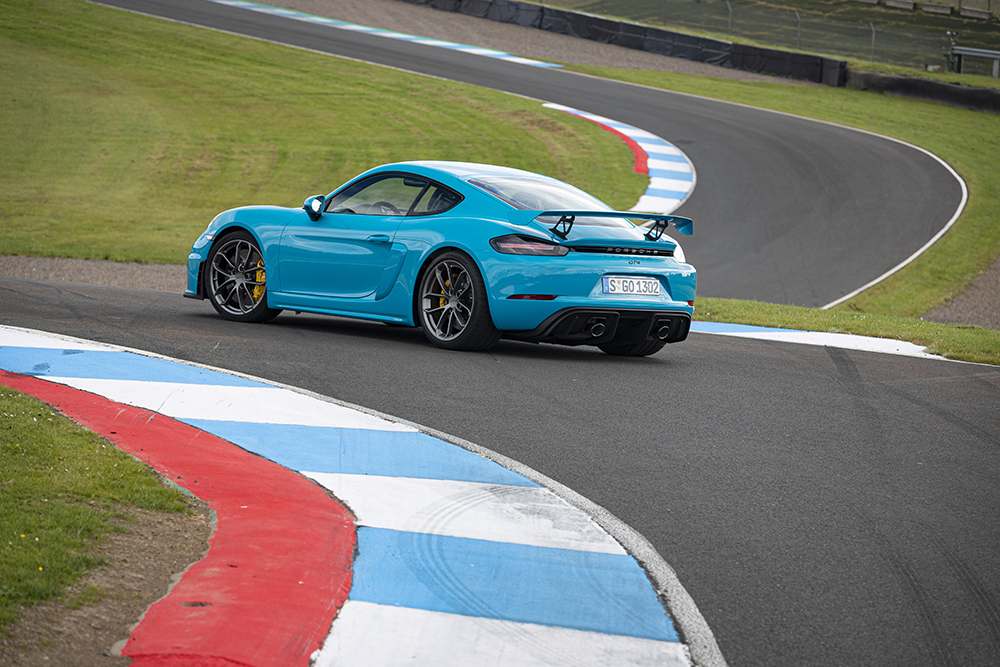
These special machines are resolutely mechanical, pure in their purpose, and simple in their operation.
Slide into the cabin of the GT4 and you’ll find a red fabric loop with which to close the door. The steering wheel has no buttons, nothing you can press to answer an incoming phone call. The naked carbon-fibre seat slides back and forth manually. You won’t find any “Sport” button or driving modes. There are three pedals in the footwell: clutch, brake, gas. You’ll need to be proficient with all three to drive this car quickly.
The GT4 is a stripped-back, track-ready version of the 718 Cayman. It adheres to the well-established formula for Porsche’s GT cars: a non-turbo flat-six engine replaces the four-cylinder turbo in the regular 718. The GT4’s specially developed high-revving, 414 hp engine is mated to a six-speed manual box. Some of the suspension’s rubber bushings are replaced with solid rose joints. As much weight as possible is stripped out — you can order it without air-conditioning or even navigation in some markets.
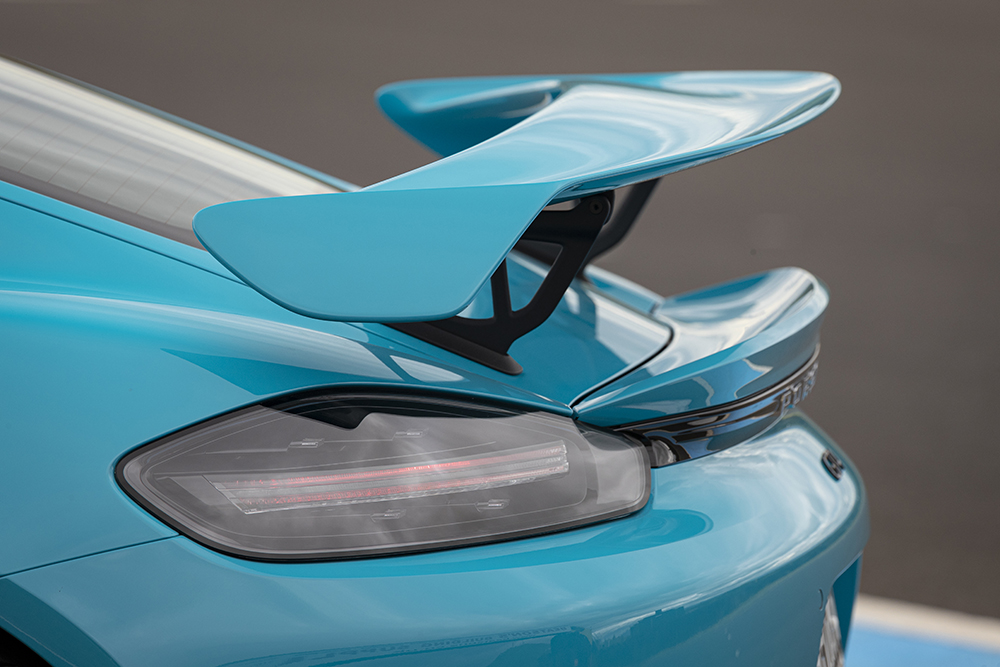
Beware: the stiffly sprung chassis means this is more of a weekend toy than a daily driver. In fact, if you do spend $100,000 on one of these, we highly recommend you spend a few thousand more on track days.
From the moment you drive off down the road, it’s obvious this sports car is different from the rest. The controls have the solid, tactile action of an old Nikon. There’s more feel, more information being transmitted from the machine back to the driver. The clutch pedal has a grainy feel. The tiny Alcantara-covered steering wheel is forever twitching and moving and flowing with the road. The steering itself is light and sharp. Through the seat, you can sense that moment right before the rear wheels start to slide across the tarmac.
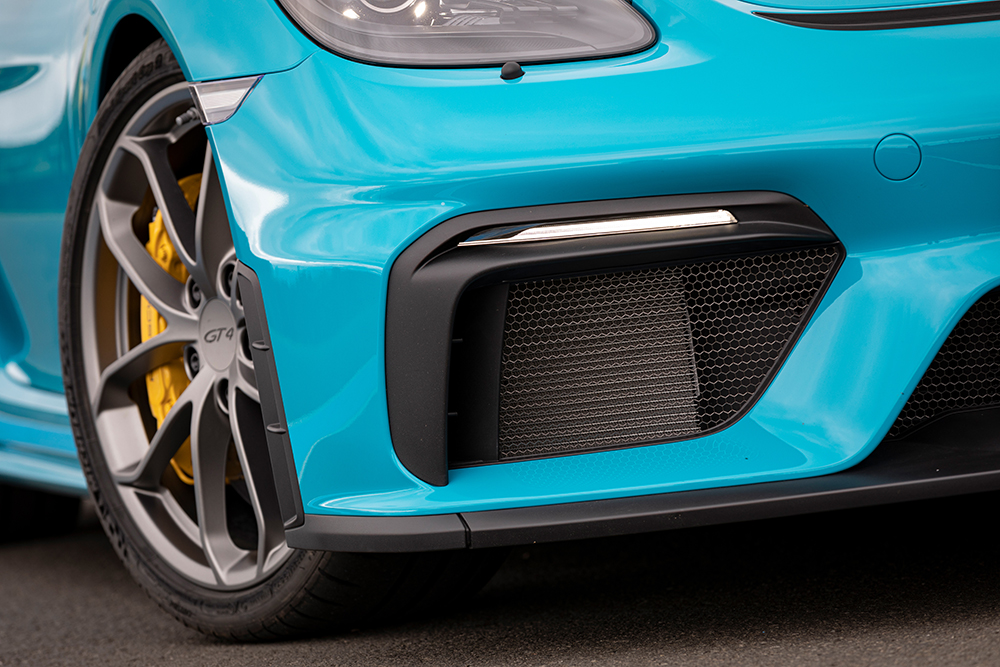
To drive the GT4 quickly is a wholly engrossing experience. It requires work. This car will reveal your shortcomings as a driver — your clumsy heel-and-toe downshifts, your indelicate brake-pedal release — and it will push you to become better.
The GT4 is not the fastest, quickest, loudest, or most practical sports car for the money — but it is the best. There’s nothing magical here. Old-school engineering makes this possible, nothing else. There’s no cutting-edge technology, no innovative doodads. It’s just a machine, a sports car honed to a razor’s edge. In 20 years, there will be faster, cleaner, more comfortable sports cars, but it will be machines like this that we yearn for.
PORSCHE’S GT LINEUP EXPLAINED
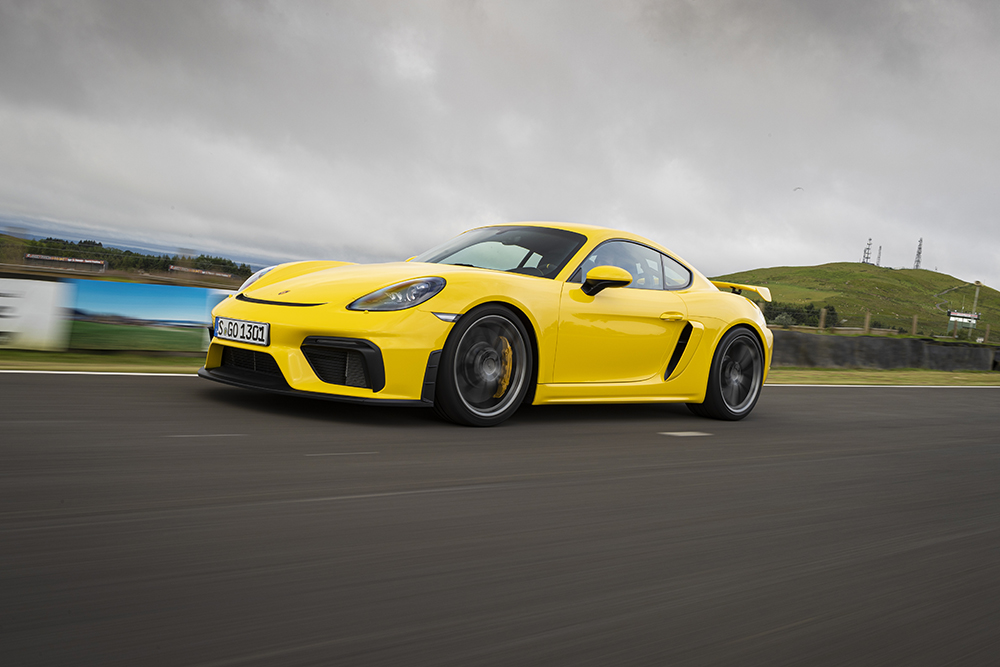
718 Cayman GT4
$113,800. 414 hp. Mid-engine. More than enough for any driver. An all-time great sports car.

718 Spyder
$110,500. 414 hp. Same as GT4, but without the roof or the enormous rear wing. Our current favourite.
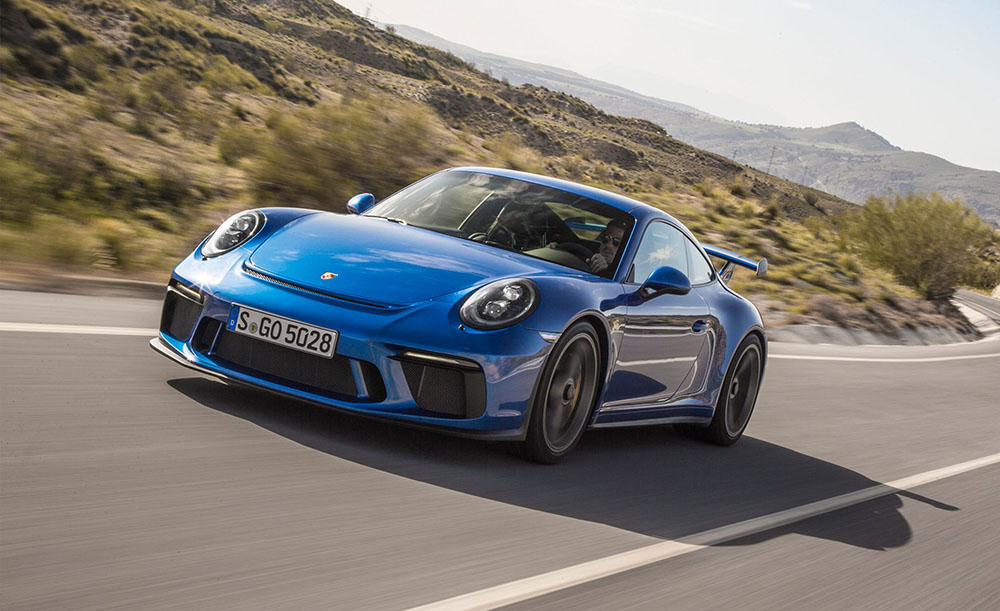
911 GT3
$163,300. 500 hp. The OG, first launched in 1999. A back-to-basics 911 that prompted the whole GT division.










